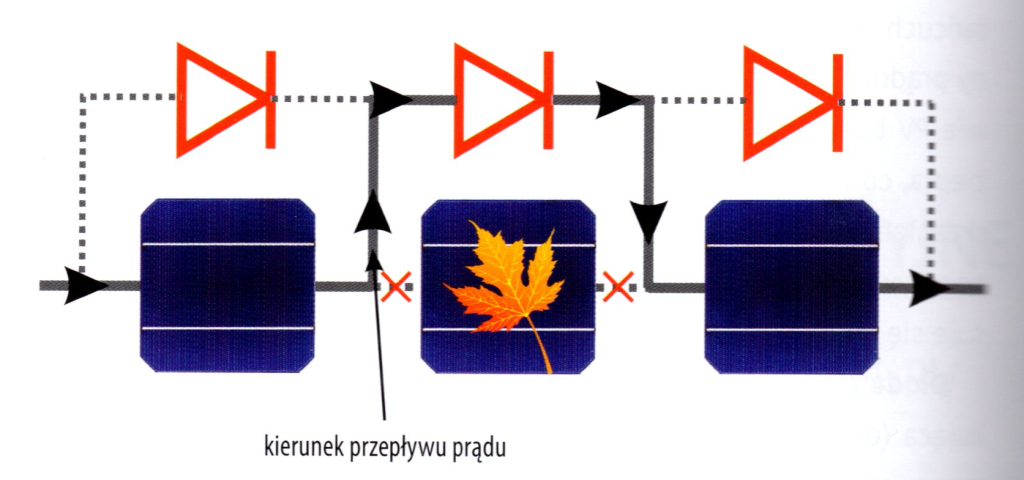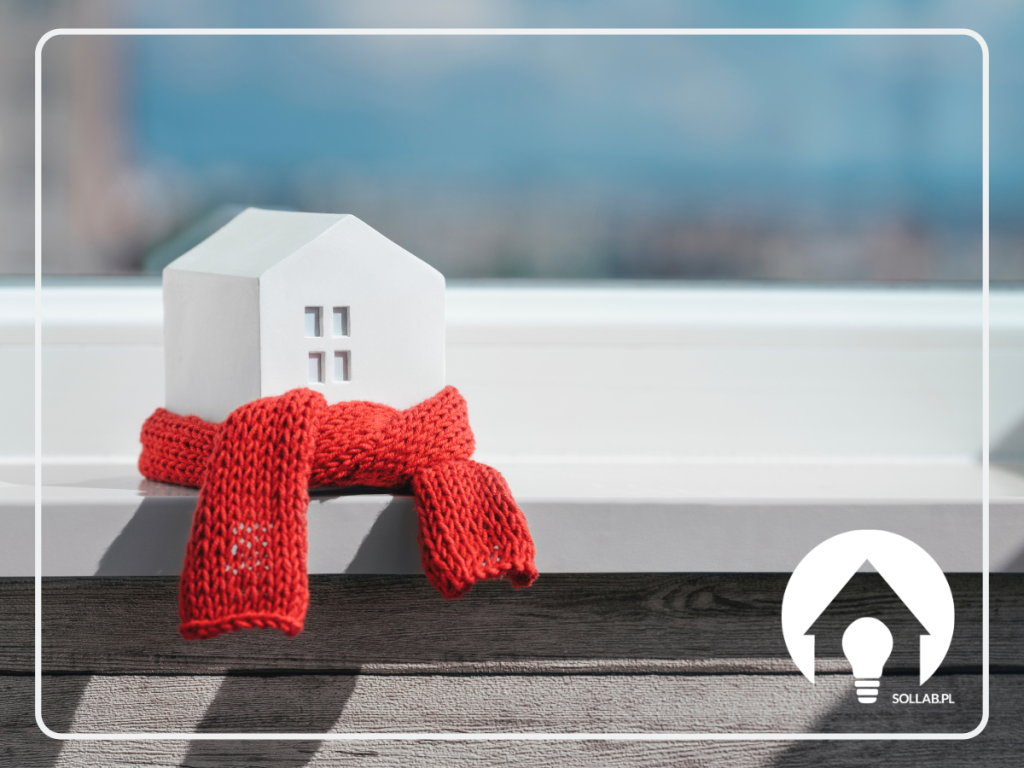What is a bypass diode in a photovoltaic panel? What is it used for?
The bypass diode, often also referred to as a protection diode or bypass diode, is an important component in the design of photovoltaic panels. It serves to protect the photovoltaic cells and ensures better module performance under partial shading conditions.
Bypass diode principle
Under normal sunlight and no shading, current flows through the cells bypassing the diodes. When one of the cells is shaded, the diode polarises in the conduction direction and current can flow in the circuit bypassing the shaded cell. When shading of the cells in the photovoltaic panel occurs and there is current in the system in the reverse direction, shunt diode polarises in the conduction direction and allows current to flow from unshaded photovoltaic panels. The bypass diode activates itself. In the event of a shadow appearing along the module, due to having three bypass diodes, only one third of the module will be switched off.
Here are the three most significant advantages of the bypass diode:
- Protection against reverse currents: When certain parts of the panel are shaded (for example, by leaves, branches or dirt), the non-energy-producing cells can act as a load, leading to reverse currents flowing through them, which can generate heat, which in extreme cases can lead to damage to the module. A bypass diode allows current to flow past these shaded cells, thus preventing reverse currents.
- Improved performance under partial shade conditions: In a situation where only part of the panel is shaded, the rest of the module can still produce energy. A bypass diode allows the shaded cells to be bypassed, so that the unshaded part of the module can continue to supply energy to the system.
- Reduction in heat loss: As already mentioned, reverse currents generate heat. The shunt diode minimises these currents, which reduces heat loss and the risk of damage to the module.

A photovoltaic panel may contain one or more bypass diodes, depending on its size and design. The most common are three diodes soldered in parallel to the cell chains.
In summary, the bypass diode is a key component in photovoltaic panels to ensure greater efficiency, durability and safety, protecting against potentially damaging reverse currents and associated thermal losses.
















